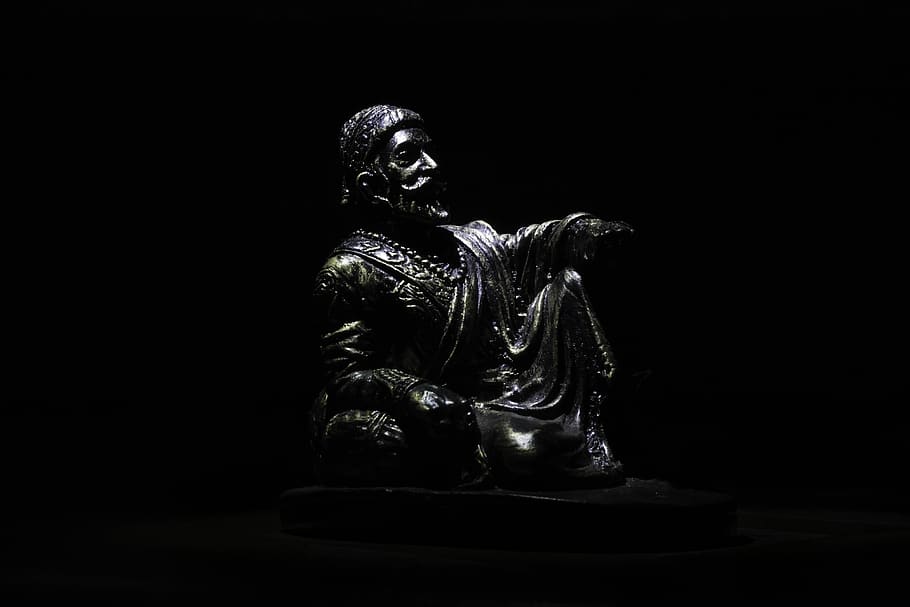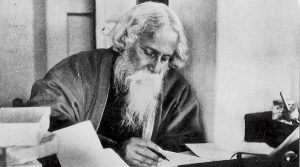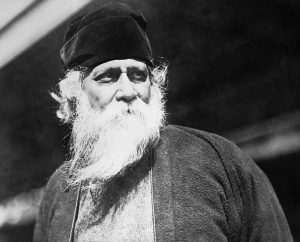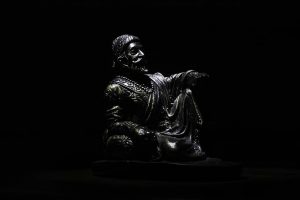
Rabindranath Tagore’s play, The King of the Dark Chamber, presents readers with a fascinating and enigmatic protagonist in the form of the King. He is the monarch who has never been seen by anyone, not even by his queen Sudarshana. Through his multifaceted characterisation, Tagore explores the complexities of human nature, power dynamics, and selflessness. This essay aims to delve into the character of the King.
A powerful figure:
From the outset, Tagore portrays the King as a figure of authority and power. His position as the ruler of the kingdom grants him immense control and influence. This is seen in the discussion between a few wayfarers, where Kaundilya talking about Janardhan, says, “If the King comes to hear of our worthy friend, he will make it a pretty hard job for him to find anyone to do his funeral rites when he is dead.” In the course of the drama, one also sees his strength while fighting against the other rulers, where all the monarchs are imprisoned after being defeated.
The dark chamber:
Furthermore, Tagore portrays the King as a reclusive individual. None of his subjects has ever seen him. One citizen says, “What a great pity, to live in his kingdom and yet not to have seen him for a single day!” One of the prevalent theories among the subjects is that the “King—is—hideous to look at”. Virupaksha, one of the citizens, says, “he has made up his mind never to show himself to his subjects”. Furthermore, Queen Sudarshana asks her maid Surangama to describe how the King looks. Surangama responds by saying that “he is not what men call handsome”.
The King’s dark chamber is situated “in the very heart of the earth”, which is devoid of any light. His secluded existence within the dark chamber metaphorically represents his internal struggles and ignorance. Hence, beneath his regal facade, the King grapples with a deep dissatisfaction with his appearance.
The King’s forgiving nature:
In the play, when the palace is burning, Sudarshana is able to see the King’s appearance through the light of the burning flame. She exclaims, “Terrible,—oh, it was terrible!…thou art black like the everlasting night!”. She is petrified and unable to look at him anymore. The appearance of the King, “black as the threatening storm-cloud”, repulses her. She longs to get away from her husband, as it would be impossible for her to love him. Hearing this, the King does not get angry. Instead, he says, “You have the utmost liberty to do as you like”. This shows the selflessness and forgiving nature of the King. He requests Sudarshana to at least “try a little?” and salvage their union.
Furthermore, one sees that the King of Kanchi is not ruthlessly killed in the fiery battle. The King allowed him to live, although he was the one who had caused the great mischief in the first place. One of the citizens said, “I heard that everyone was punished except Kanchi”.
Consequently, when Sudarshana returns to the King’s palace, he lovingly asks her, “Will you be able to bear me now?”. Sudarshana responds by saying, “Oh yes, yes, I shall..You are not beautiful, my lord—you stand beyond all comparisons!” Hence, the King accepts the queen’s mistakes and allows her to regain her position as his wife.
Conclusion:
Thus, The King of the Dark Chamber presents readers with a complex and compelling protagonist in the form of the King. Tagore’s protagonist invites readers to reflect upon their internal conflicts and the selflessness within each of us.
It is also interesting to listen to Tagore’s Rabindrasangeet, which is available on Phalguni Mookhopadhaya’s Youtube Channel — https://www.youtube.com/@pmbrainware





